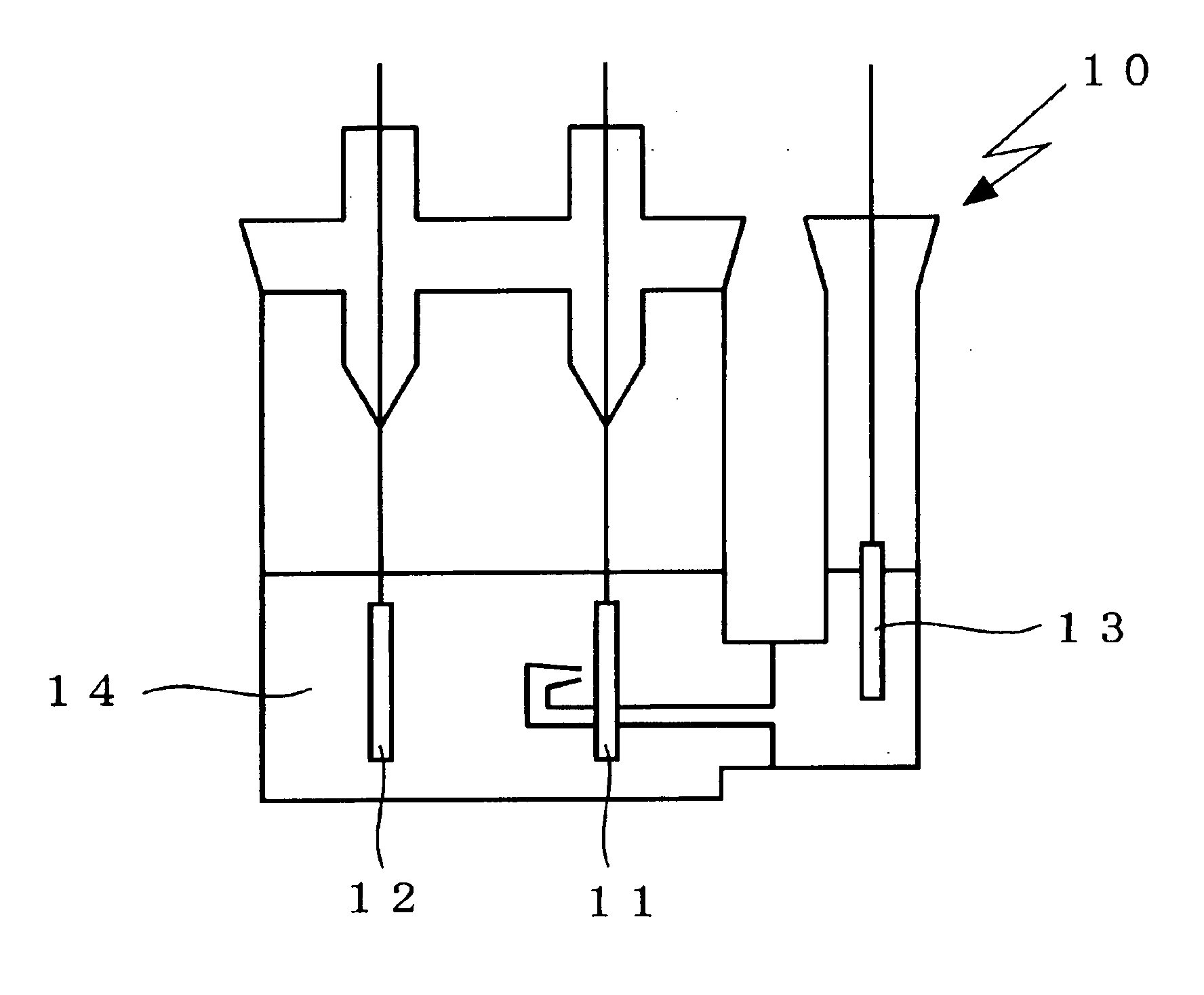Non-aqueous electrolyte secondary battery
a secondary battery and non-aqueous electrolyte technology, applied in the direction of cell components, electrochemical generators, transportation and packaging, etc., can solve the problems of battery voltage reduction, high manufacturing cost, and non-aqueous electrolyte secondary battery that uses licoo/sub>2 as the positive electrode active material suffers significant thermal stability degradation, etc., to achieve stable discharge operation
- Summary
- Abstract
- Description
- Claims
- Application Information
AI Technical Summary
Benefits of technology
Problems solved by technology
Method used
Image
Examples
example 1
[0033] In Example 1, a positive electrode was prepared in the following manner. The above-described positive electrode active material composed of LiFePO4 and a lithium-free metal oxide NiO were mixed at a weight ratio of 9:1. The resultant mixture, a conductive agent made of a carbon material, and an N-methyl-2-pyrrolidone solution in which a binder agent made of polyvinylidene fluoride was dissolved, were mixed so that the mixture, the conductive agent, and the binder agent were in a weight ratio of 90:5:5, to thus prepare a positive electrode slurry. Then, the positive electrode mixture slurry was applied onto an aluminum foil serving as a current collector and then dried. Thereafter, the resultant material was pressure-rolled using pressure rollers, and a current collector tab was attached thereto. Thus, a positive electrode was prepared.
example 2
[0034] In Example 2, a positive electrode was prepared by mixing the positive electrode active material composed of LiFePO4 with a lithium-free metal oxide at a weight ratio of 9:1, in the same manner as described in Example 1 above, except that Co3O4 was used as the lithium-free metal oxide in place of NiO.
example 3
[0035] In Example 3, a positive electrode was prepared by mixing the positive electrode active material composed of LiFePO4 with a lithium-free metal oxide at a weight ratio of 9:1, in the same manner as described in Example 1 above, except that Mn2O3 was used as the lithium-free metal oxide in place of NiO.
PUM
| Property | Measurement | Unit |
|---|---|---|
| particle size | aaaaa | aaaaa |
| mole ratio | aaaaa | aaaaa |
| voltage | aaaaa | aaaaa |
Abstract
Description
Claims
Application Information
 Login to View More
Login to View More - R&D
- Intellectual Property
- Life Sciences
- Materials
- Tech Scout
- Unparalleled Data Quality
- Higher Quality Content
- 60% Fewer Hallucinations
Browse by: Latest US Patents, China's latest patents, Technical Efficacy Thesaurus, Application Domain, Technology Topic, Popular Technical Reports.
© 2025 PatSnap. All rights reserved.Legal|Privacy policy|Modern Slavery Act Transparency Statement|Sitemap|About US| Contact US: help@patsnap.com


